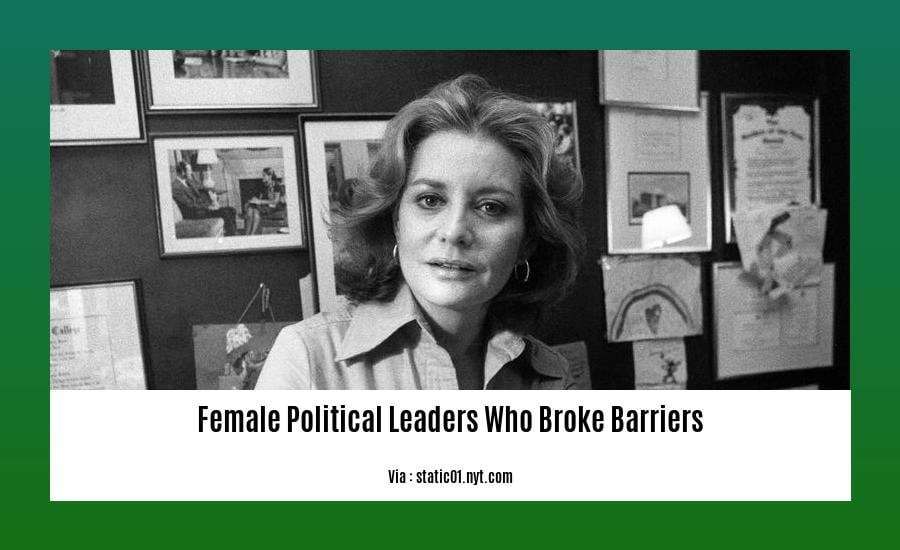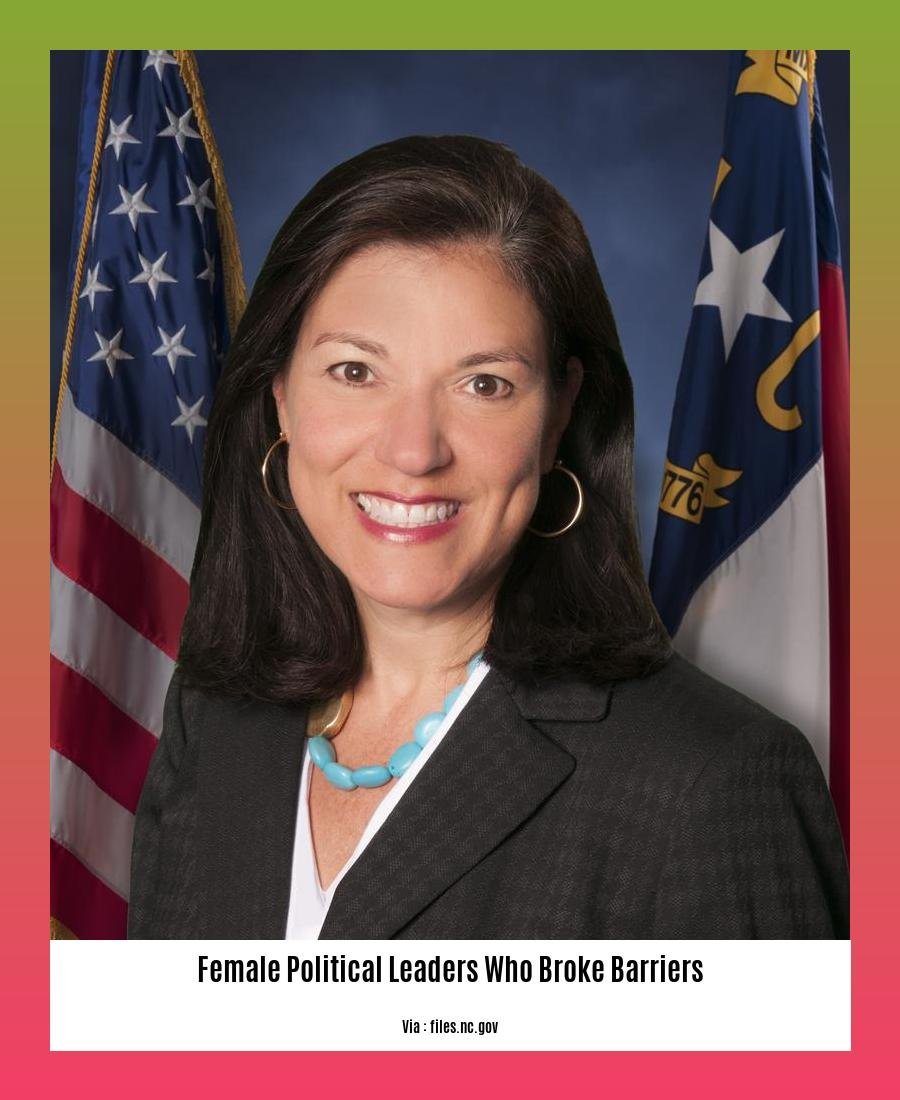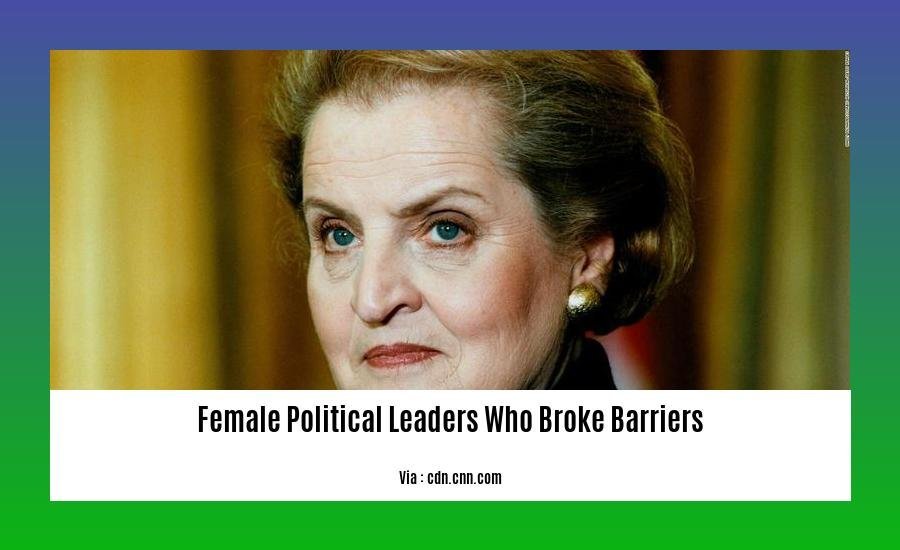The glass ceiling has been a persistent barrier for women seeking political leadership, but a new wave of female leaders is shattering it. These women are not only breaking through traditional gender roles, but also reshaping the political landscape. Their stories of resilience, determination, and impact serve as inspiration for all who believe in equality and progress. In this article, we will delve into the world of female political leaders who broke barriers and transformed the status quo.

Key Takeaways:
Women’s Empowerment: Female leaders have shattered glass ceilings and made significant strides in political representation.
Diversity and Inclusion: Breaking barriers paved the way for increased diversity and representation in decision-making roles.
Economic Impact: Female leaders have made significant contributions to the economy and financial empowerment through entrepreneurship and savvy investments.
Educational Access: Trailblazing women have demonstrated the importance of education for women and girls.
Social Change: Political representation by women has led to positive social changes, such as the advancement of women’s rights and the breaking down of gender stereotypes.
Female Political Leaders Who Broke Barriers
In the grand tapestry of history, the contributions of female political leaders who broke barriers stand out as luminous threads, forever altering the fabric of our societies.
Champions of Equality and Representation
These trailblazing women defied societal norms and shattered glass ceilings, paving the way for future generations of leaders. Their stories are testaments to resilience, determination, and the power of advocacy.
Rebecca Latimer Felton’s election to the US Senate in 1922 marked a watershed moment for women in politics. As the first woman to hold this esteemed office, she became a symbol of progress and the growing demand for female representation in government.
Pioneers in Their Fields
Beyond politics, women have also made remarkable strides in other arenas. Marie Luhring, the first female automotive engineer in the US, revolutionized the transportation industry. Bessie Coleman, the first Black woman to earn an international pilot’s license, defied racial and gender stereotypes by taking to the skies.
Inspiring Stories of Success
The journeys of these women are not just personal triumphs; they are collective victories, inspiring countless others to break free from societal constraints and pursue their dreams.
Madam C. J. Walker, the first Black woman millionaire, built a hair care empire that not only empowered her but also provided employment opportunities for African Americans. Her story is a testament to the indomitable spirit of entrepreneurship and the power of economic empowerment.
Their Legacy Lives On
The impact of these female political leaders who broke barriers reverberates through generations. They have not only shattered glass ceilings but have also created a more inclusive and just society. Their legacies serve as a constant reminder that anything is possible, regardless of gender or background.
As we reflect on their achievements, let us draw inspiration from their courage, resilience, and determination. May their stories continue to inspire us to push boundaries and create a better world for all.
From trailblazing women political leaders to pioneering female leaders who made history, there are many inspiring stories of women who shattered glass ceilings and made a significant impact on the world.
The Benefits of Gender-Inclusive Leadership
Gender-inclusive leadership empowers diverse voices and perspectives, leading to more equitable and responsive policies. It fosters representation, where individuals from all backgrounds feel valued and heard.
Promoting Vulnerable Populations
Women leaders often champion issues like healthcare, education, and welfare, addressing the needs of marginalized communities. By incorporating their lived experiences, they bring diverse viewpoints to decision-making.
Breaking Down Barriers
Women leaders navigate unique challenges such as gender stereotypes and exclusion. Their tenacity and resilience inspire others to overcome barriers and pursue their leadership aspirations.
Expanding Political Participation
Increasing women’s participation through quotas and caucuses ensures they have a meaningful voice in decision-making. It encourages young girls to envision themselves as future leaders.
Empowering Other Women
Women leaders have the power to appoint and support other women into leadership roles. This creates a ripple effect, empowering more women to take on leadership positions.
Key Takeaways
- Enhances representation and inclusivity.
- Promotes policies that benefit vulnerable populations.
- Inspires young girls to pursue leadership.
- Challenges gender stereotypes and creates a more equitable society.
Citation
Women Political Leaders: The Impact of Gender on Democracy
Closing the Leadership Gap: Shattering Barriers, Empowering Women in Politics
Women have historically faced systemic barriers that have hindered their progress in leadership positions. Despite recent progress, women remain significantly underrepresented in C-suite leadership.
Contributing Factors:
- Gender stereotypes and biases
- Lack of role models and mentors
- Limited access to funding and resources
- Family responsibilities
Benefits of Closing the Leadership Gap**:
- Increased representation and inclusivity
- Improved decision-making and innovation
- Breakdown of gender stereotypes and role models for future generations
- Economic benefits for companies and societies
Key Steps to Closing the Leadership Gap:
- Address bias and discrimination through training and awareness programs
- Provide funding and support for women’s entrepreneurship and leadership initiatives
- Encourage mentorship and sponsorship programs
- Promote work-life balance to support female leaders with family responsibilities
Key Takeaways:
- Women’s representation in leadership is crucial for a fair and equitable society.
- Barriers to women’s leadership must be actively addressed and removed.
- By investing in women’s leadership, we unlock their full potential and drive progress.
Citation:

FAQ
Q1: What are some of the barriers women face in achieving leadership positions?
A1: Women face numerous barriers in achieving leadership positions, including gender stereotypes, lack of role models, and exclusion from decision-making processes.
Q2: What is the current status of women in leadership positions?
A2: Despite recent progress, women are still underrepresented in leadership positions. While they have made gains in mid-level management positions, they continue to face challenges breaking into higher-level roles.
Q3: What are the benefits of having a gender-inclusive leadership?
A3: Gender-inclusive leadership brings numerous benefits, including improved decision-making, increased innovation, and a more diverse and representative workforce.
Q4: What are some effective strategies for closing the leadership gap for women?
A4: Effective strategies for closing the leadership gap for women include implementing quotas and caucuses to increase their representation in politics, providing training and mentorship programs, and challenging gender stereotypes.
Q5: What is the impact of women’s leadership on society as a whole?
A5: Women’s leadership in politics and other fields has a positive impact on society as a whole, promoting issues that benefit vulnerable populations, fostering inclusivity, and inspiring future generations.
- Unlock Filipino Culture: A Deep Dive into Traditions and Practices - April 23, 2025
- Unlock Spanish Culture: Insights & Opportunities Now - April 23, 2025
- White Spirit Uses & Substitutes: A Deep Dive for Pros & DIYers - April 23, 2025
















